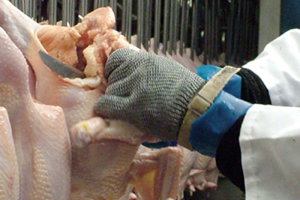Focusing on reducing risks in poultry plants

“Safety comes first. It does not make sense to try to cut corners in your rendering plant and not put extra money toward safety until someone gets injured, when you could have implemented a safety program from the beginning,” observed Steve Harris, off-site corporate area safety manager with the Poultry Product Optimization/RVAF Group of Tyson Foods, during USPOULTRY’s 2013 Poultry Protein & Fat Seminar in Nashville, TN.
In his presentation, Controlling Industrial Hazards in Rendering Plants, Harris provided managers with background information on the health effects employees may experience when exposed to hydrogen sulfide (H2S). He also discussed best practices to reduce this gas in the workplace, which includes monitoring systems, “hands-on” training programs and proper plant ventilation. “OSHA wants to ensure that we are not being exposed to H2S and that we are doing everything possible when traces of it are found,” he remarked to the poultry rendering managers in attendance.
Leah Wilkinson, director of ingredients, pet food and state affairs with the American Feed Industry Association, provided a Regulatory Update, which included key information about the Food Safety Modernization Act. She provided additional information on the feed rules due out soon, reminding managers that the rule will be patterned after HAACP and will establish Good Manufacturing Practices. Wilkinson also discussed rules currently out for comments, including the Hazard Analysis and Preventive Control rule and the Foreign Supplier Verification rule, an international portion of the Preventive Control rule.
Dr Charles Starkey, director of technical services for American Proteins, gave an update on Salmonella Interventions in the Rendering Plant. “We all have a role in food safety, whether you are in QA, accounting, or operations, because the FDA audits that are getting ready to occur will be pretty in-depth. One big issue that is going to come up is Salmonella,” he warned. He also provided basic tools to help managers control Salmonella in their plants, including proper housekeeping and reducing pests.













